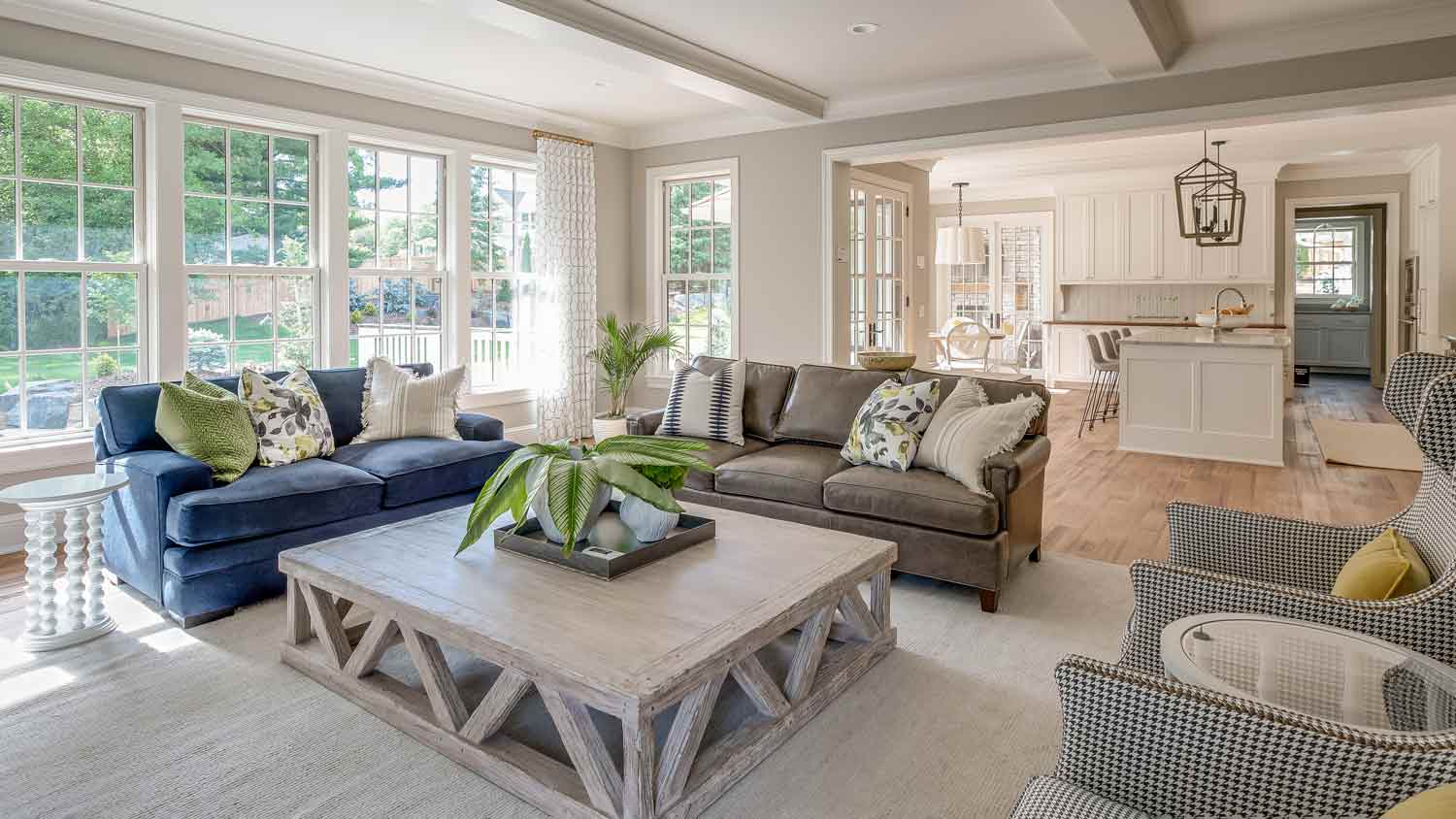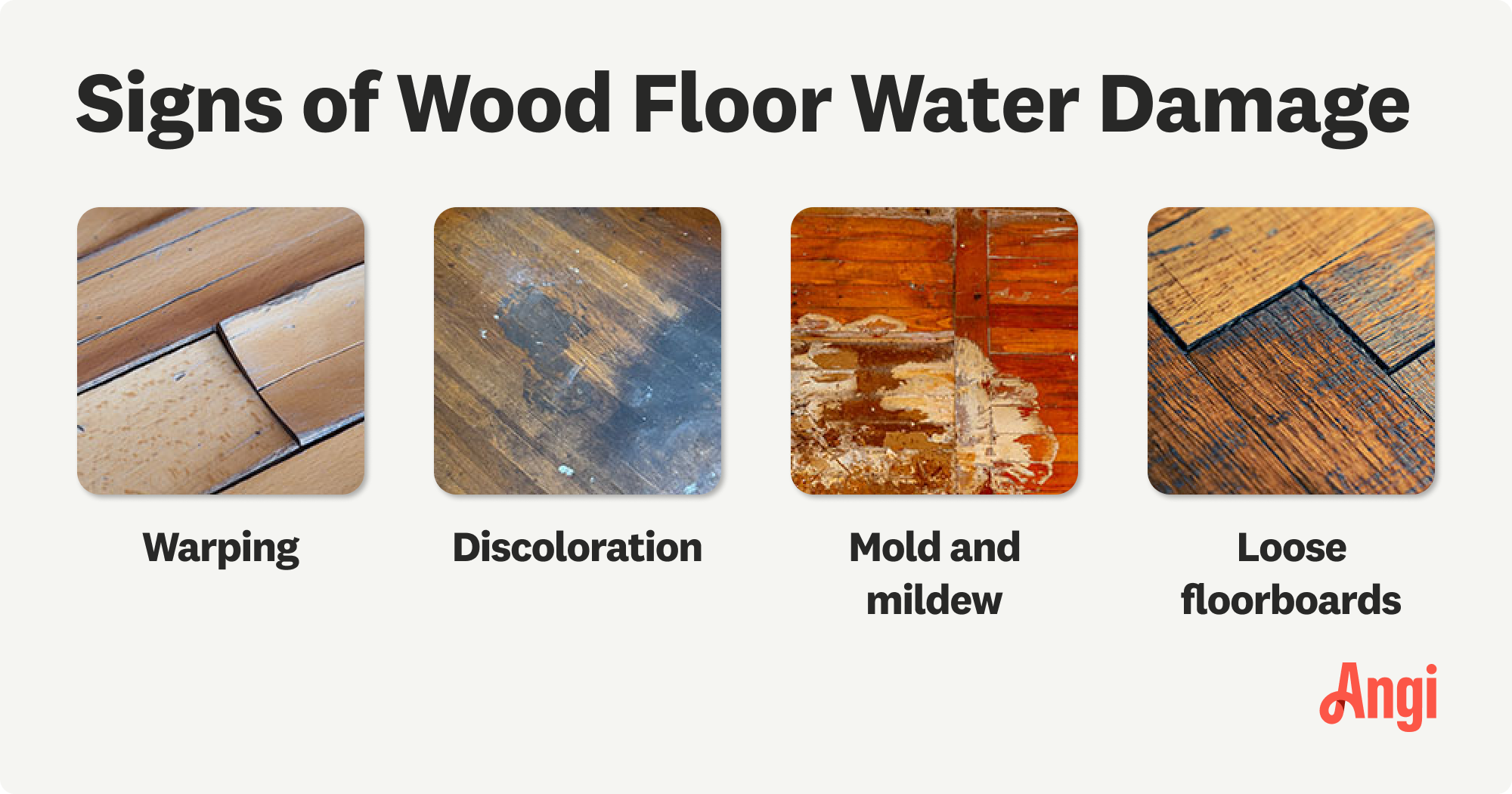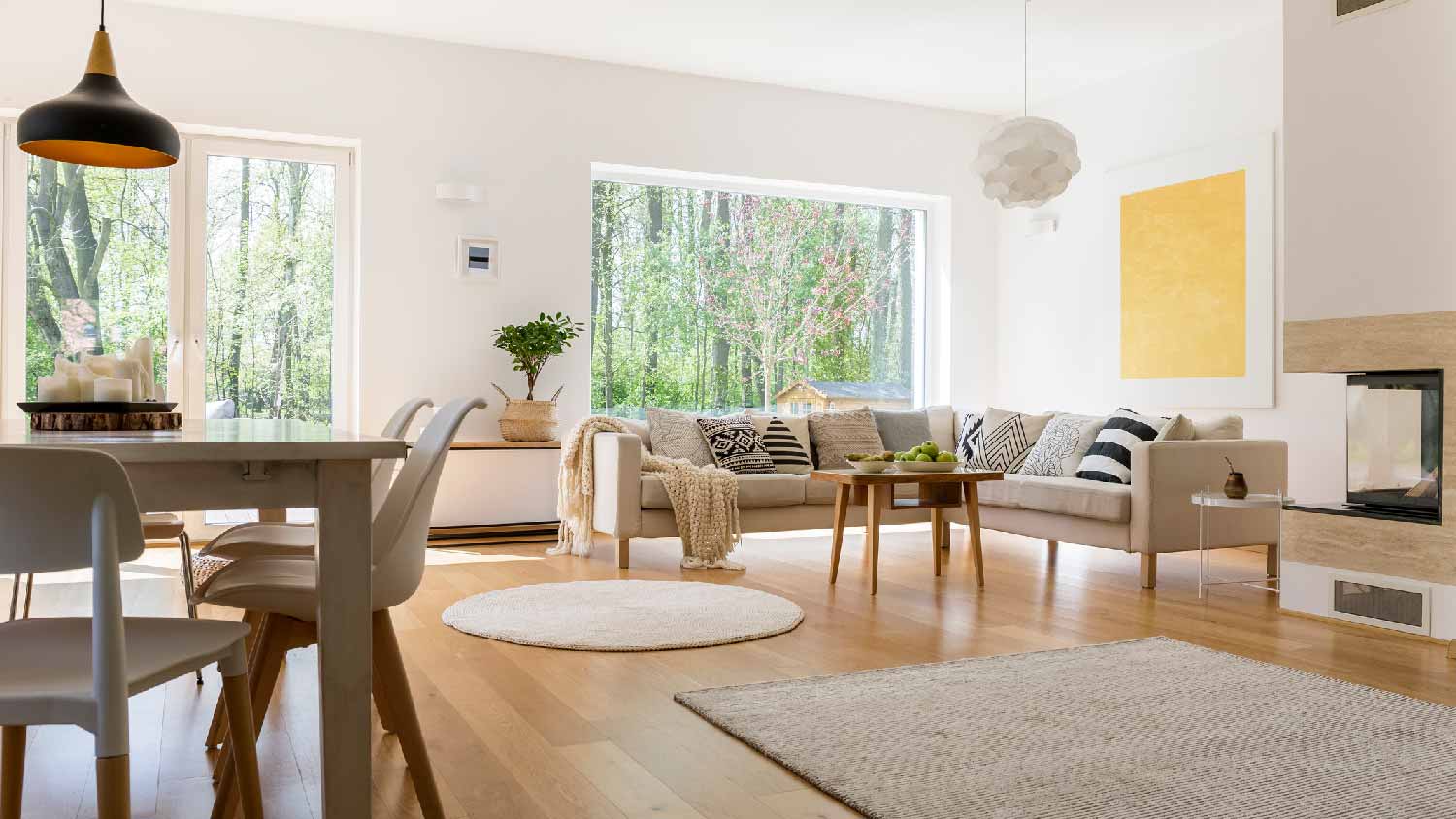
Need to get rid of lingering smoke odors in your home? Learn how much smoke remediation costs to budget accurately for this major undertaking.
Save your water-damaged wood floor with this step-by-step guide


Hardwood floors are naturally beautiful and elegant, but if you have a plumbing leak or experience flooding, they’ll quickly warp and show signs of water damage. Don’t panic—it’s possible to DIY the repairs. In this guide, we’ll explain how to fix water-damaged wood floors to help you bring that upscale beauty back to your living space.
When water damage is discovered, turn off the power and disconnect all electronic devices from any affected area.

When water runs wild in a home fitted with electricity, safety should always come first. Before you start pulling up wet floorboards, turn off all appliances and cut the power in the water-damaged area.
You’ll also need to make sure you have enough new floorboards to replace the damaged ones. You can check utility rooms and other storage areas in your home to see if the installer left behind extra flooring material. If not, bring a piece of damaged floor to your local home improvement store and ask if they can help you match it.
Mold grows within 24 hours after water damage, so the longer water sits, the more damage it causes to your wood floor. Your first order of business should be to remove any puddling on your floors. Use a shop vacuum to remove surface water as soon as you can. Using a wide attachment to the vacuum hose will effectively remove most surface water. Once you get up what you can with your vacuum, use a large sponge to remove what’s left.

Use a mild wood floor cleaning solution or mix detergent, water, and disinfectant to create your own cleaning solution. Next, carefully scrub all affected areas, including water-damaged baseboards, with a soft-bristle brush.
Check the floors for signs of mold. If mold is present, use a more abrasive cleaner and a mold treatment solution to clean the affected area. Once the discoloration or mold growth is removed, rinse the surface with clean water and wipe it dry using your sponge.
Before you move on to the actual replacement, you need to let your floor dry completely. Set up blower fans in the room and open up your windows to accelerate the drying process. This can take anywhere from 24 to 72 hours, depending on your climate and the extent of the water damage.

If you notice minor cupping or crowning, using a floor sander can smooth out the surface. Note that you’ll need to refinish the sanded areas to match the existing floors, so only attempt this if you have matching stains and protective finishes. If you’re uncomfortable sanding your floors, don’t have a matching stain, or see excessive cupping and crowning, hire a water damage professional instead to get the job done.
Mold can easily grow under surface paint. Therefore, if your floors were painted, you should apply additional mold treatment now that the wood is exposed. Use an abrasive cleaner with disinfectant properties to clean the naked wood surface. You can also use mild bleach as your disinfectant. Once finished, wait for the floors to dry.
If any floor panels look severely damaged, use a pry bar to remove them. Repeat cleaning and mold treatment for the subfloor underneath the floor and wait until it is fully dry.
Most homes use standard-sized wood flooring, and you can sometimes find replacement panels at your local home improvement store. You may need to contact your flooring manufacturer for an exact match, though. Once you have your supplies, apply flooring adhesive to the back of your new panel and align it in place. Hold the panel down for a few minutes to let the glue settle.

Finally, repaint, restain, or refinish the floor. This provides additional protection for your repaired floors. Most stain-resistant wood floor sealers are oil-based and thus increase the floor’s water resistance. You can also use water-based urethane waterproofing sealers. Use two or three coats of sealers, and make sure the previous coat is fully dry before applying the next layer.
Restoring water-damaged wood floors is a challenging DIY project, especially since you want a professional look once you’re done. There are a few key mistakes to avoid when doing this work.
Failing to address the source of the water: If you’re repairing your floors after a flood caused by a natural weather event, you’re in the clear. But if your floors were damaged from a roof leak or plumbing leak, always address the source of the leak first. Otherwise, you’ll just end up with repeat damages.
Rushing the drying process: Wood takes a minimum of 24 hours to dry, and you should really run fans for 48 to 72 hours to be safe. Sanding too early will lead to additional warping and cupping after you finish, which means you’ll just need to start the process over.
Not checking the condition of the subfloor: When you pull up damaged floorboards, be sure to check the subfloor for signs of damage. If there’s water damage or mold growth at that level, call in a water damage professional immediately. You’ll likely need to replace portions of the subfloor, too, which is a major undertaking.
Ignoring mold: Never ignore signs of mold on or under your flooring. Remove the mold with an abrasive cleaner first, and be extra careful to dry the flooring before you sand, replace, and refinish. Mold will continue growing under flooring and can lead to poor indoor air quality and further damage.
Not choosing a matching finish: Make sure you have stain and protective finish left over from when you originally finished your flooring. If you don’t, the replacement panels won’t match. Consider hiring a professional to sand and refinish the entire floor if you don’t have a matching stain.
It’s important to catch water damage early. The most common signs that indicate you have a moisture problem are rotting, buckling, or peeling surfaces, which show up in 31% of cases. Damp or wet areas are also common indicators at 26.5%.
Repairing water-damaged wood floors is doable but often time-consuming, especially when factoring in the drying times needed between steps. It’s much more challenging than dealing with other types of floor materials, like repairing laminate floors after water damage, so you may want to call a pro. While replacing floorboards that have topical damage is doable as a DIYer, simply repairing the floor may not be your ultimate fix, as there could be other types of water damage occurring around or under the floors.
If you’ve never worked with wood flooring before, or you suspect that the water damage runs deeper than the surface of your floors, call in a local water damage restoration company to take a look. Water damage restoration costs an average of $3,800, but a pro can assess the extent of the damage, help you decide if you need subfloor repairs, and perfectly match your new boards to the existing ones for a clean, professional look.
From average costs to expert advice, get all the answers you need to get your job done.

Need to get rid of lingering smoke odors in your home? Learn how much smoke remediation costs to budget accurately for this major undertaking.

Ozone treatment can help with lingering smoke odors. Learn about ozone smoke removal costs to get an accurate idea of how to budget for this service.

Fire hydrant costs might not be an expense you think about day-to-day, but they’re important to consider for the safety of your home.

Left alone, dry rot is bad news for your home and can lead to major structural damage. Save your home by learning how to repair dry rot before it spreads.

This article covers everything you need to know about water damaged concrete, including causes, DIY fixes, repair costs, when to replace it fully, and maintenance tips.

Water damage can lead to costly, inconvenient repairs, health risks, and more. Preventing water damage can be simple with these nine prevention tips.